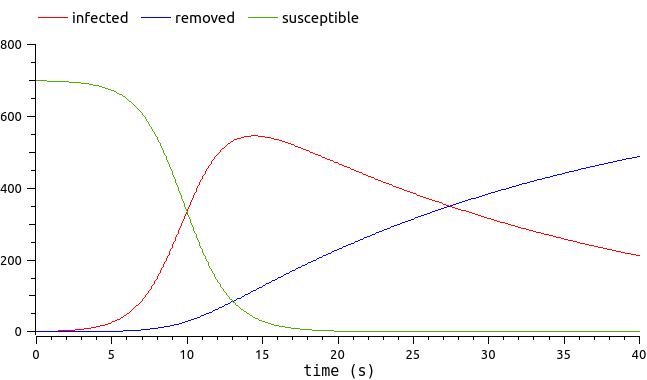Examples
Epidemiologic example
These examples rely on epid.fmu. This epidemiologic model represents the spreading of an epidemic through a population.

Common low-level functions
The 4 classes mentioned here upper are based on low-level functions
from the submodule otfmi.fmi.
These functions can be used to load, initialize or simulate the FMU with more control. The tutorials are based on the static deviation.fmu example.
From OpenTURNS to FMI
Warning
This feature is experimental.
The focus of OTFMI module is to enable FMUs analysis using OpenTURNS. Once a computationnally heavy FMU is metamodeled, the modeler may want to employ the metamodel instead of the FMU in the simulation tool.
Cantilever beam example
These examples rely on deviation.fmu. This mechanical model represents the deviation of a cantilever beam submitted to a load at its end. Unlike most FMI models the deviation model is static, i.e. its output does not evolve over time.
